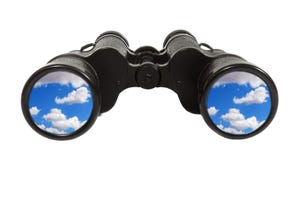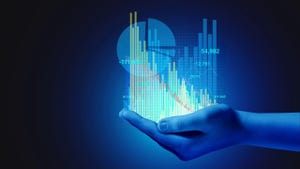P&G's CIO Details Business-Savvy Predictive Decision CockpitP&G's CIO Details Business-Savvy Predictive Decision Cockpit
At the <em>IW500</em> Conference, P&G's Filippo Passerini demos analytic dashboards used to forecast performance and drive the right decisions.

Sometimes you have to put the cart before the horse, according to Filippo Passerini, Procter & Gamble's Business Services Group President and CIO. That's how the consumer products giant came up with a decision-support environment now used by more than 60,000 employees worldwide to see what's happening in the business, why it's happening, and how to respond to changing market conditions.
During a Monday keynote at the InformationWeek 500 Conference in Dana Point, Calif., Passerini explained that P&G's analytics team created a prototype for a real-time decision-support cockpit three years ago knowing that it could not yet deliver all of the business metrics it was promising. But because that prototype was so laced with business-relevant metrics, Passerini had little doubt the project would win funding and adoption.
"When we started, we had 50% to 60% of the data automated, and for the balance we did a lot of manual work, but that created an incentive for our business leaders to invest because they saw what was possible," Passerini said.
The decision cockpit is focused on forward-looking projections rather than historical reporting, with three-month, six-month and 12-month projected trend lines for market share, cost of goods, and margins. All of the data is drillable, meaning you drop down from the companywide views to study performance by country, region, brand, and product.
[ Want more on P&G's analytics initiative? Read P&G Turns Analysis Into Action. ]
A tree-map visualization shows the relative revenue and profit contribution of each region, country, territory, brand and product. P&G's performance is also stacked up against that of competing brands and products. Green and red color coding and shading indicates where the company is gaining and losing ground and where the swings are minor or extreme.
An equally important part of P&G's initiative was the construction of about 50 collaborative conference rooms in company offices around the globe. The rooms, dubbed Business Spheres, are surrounded by projection screens for displaying the dashboards as well as live video-conferencing sessions with remote executives who might not be able to attend meetings in person. Remote executives can see the same data visualizations being displayed in the conference rooms through their laptops or iPads.
Each week, P&G executive across the globe and at all levels of the organization meet in the Business Spheres to review the latest results and forecasts available through the decision-cockpit dashboards. Executives can discuss what to do about gains and losses based available metrics. That might mean adjusting pricing, changing the product mix, changing merchandising approaches or increasing marketing expenditures to regain market share where there are losses or to improve margins where conditions are strong.
"What's different now versus what we did three years ago is that all this data is coming together in the context of the business discussion," Passerini said. And because it's the single source of truth for P&G executives around the globe, "it's not fragmented by geography or management level and, importantly, it's coming in real time to make better decisions faster in every single business review we do."
With the success of the decision cockpit, P&G has been able to do away with more than 80% of the company's standardized business intelligence reports, according to Passerini. Most users embraced the new approach as more attractive and usable than spreadsheet-based reports sent by email, but in some cases users had to be "forced over the hump" of reliance on the old reports, he said.
The technologies in use at P&G include SAP ERP systems and an Oracle Exadata data warehouse, a combination that the company has tuned to deliver the real-time operational data. SAS and Tibco Spotfire are the analytics and data visualization software providers behind the decision-cockpit predictions and data visualizations. Cisco video conferencing technologies are part of the Business Sphere collaborative environment.
But there's isn't any one significant component of the decision cockpit or Business Sphere environment that came out of a box. It's a first-class, highly customized, and purpose-built system based on P&G's ambitious vision.
Passerini's emphasis on predictive decision support was echoed by InformationWeek 500 Conference keynoter Randy Mott, the former Walmart, Dell, and HP CIO who recently took that role at General Motors. He said that data warehousing and the analytics and visualizations generated from them "provide a consistent picture to view and think about decisions. Without it, you react to things that go wrong rather than having a cadence of good business decisions."
About the Author
You May Also Like






